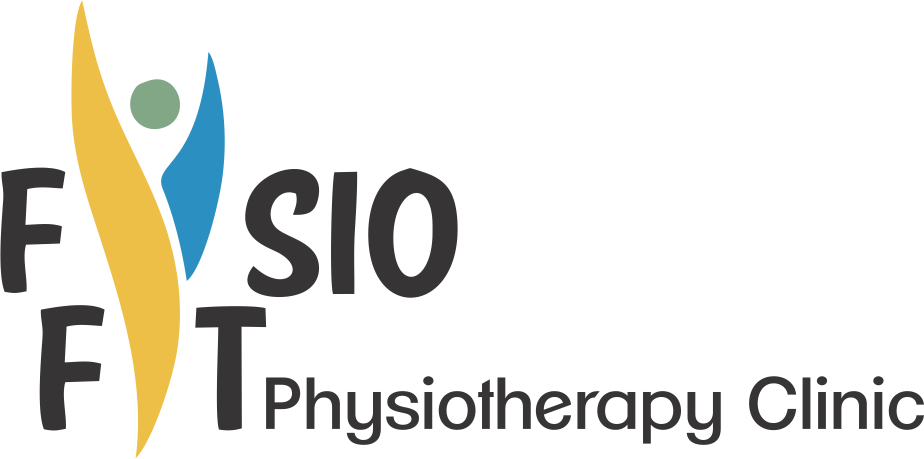
According to WCPT ( world confederation of physical therapists ), physical therapy is concerned with identifying and maximizing the quality of life and movement potential within the spheres of promotion, prevention, treatment, habilitation, and rehabilitation.
Physical therapy is also known as physiotherapy is the health profession concerned with the assessment, diagnosis, and treatment of the disease, and disability through physical means. It provides services to individuals to develop, maintain, and restore the maximum movement. Physiotherapy helps in reducing pain, restore mobility, and flexibility, increase the range of motion of joints, strengthen the muscles, and maintain the correct posture of the body.
Physiotherapy has been done by a physical therapist (physiotherapist) who is a licensed health care professionals in a particular state or state. They should have a bachelor’s and master’s degrees in physiotherapy.
Work of Physiotherapist:
The physiotherapist should be humble, understanding, caring towards the patients. The physiotherapist should listen to the problem of the patients carefully. He should evaluate the patient properly and then conclude with a diagnosis. After this, he should plan treatment and start implementing it. Regular assessment of the patients is necessary and modification of the treatment is required.
History of Physiotherapy:
Physiotherapy was introduced in the United States during World War 1 to rehabilitate soldiers. Hippocrates used to practice physical therapy in the form of massage, hydrotherapy, and manual therapy in 460 BC. Modern physical therapy comes into existence in the 19 century.
Types of Physiotherapy:
1. Orthopedic Physiotherapy: It focuses on injuries related to bones, joints, tendons, ligaments, and muscles. It includes sports injuries. One of the emeritus professors of orthopedics, all India institute of medical science says “orthopedic surgeon should never pick up a knife unless he has a competent physiotherapist”. The factors like highly sedentary mechanical lifestyle, and even increased incidence of trauma due to modernization, industrialization and the increased number of automobiles are the challenges faced by orthopaedicians and physiotherapists. Orthopedic physiotherapy falls into two major categories depending upon the severity-
a).Short – Term Physiotherapy: This includes patients with minor neuro-muscular-skeletal lesions. The lesions could be traumatic involving simple soft tissue injuries, simple fractures, or could be non-traumatic. Such patients need outpatient physiotherapy for a short duration to bet well.
b). Long–Term Physiotherapy: This category refers to more complicated diseases like rheumatoid arthritis, major hip fractures like hip, spine which may result in severe physical disability and complications like paraplegia and tetraplegia or may need surgical procedures. These patients need longer sessions of extensive physiotherapy and usually are non-ambulatory.
2. Neurological Physiotherapy: There is a various neurological condition which requires regular physiotherapy. Lesions of the nervous system – whether of the brain, spinal cord, or the peripheral nerves could be due to various reasons like trauma, certain infections, congenital defects, deficiency diseases like vitamin B -12, and neoplasm. Problems like paralysis of muscle whether it is hemiplegia or tetraplegia. Others like ataxia, vertigo, rigidity due to Parkinson’s, tremors, and dystonia. Long term physiotherapy is required in all such conditions. Physiotherapy aims to achieve independence. When a functional activity is impossible to achieve then the physiotherapist will try to help the patient to compensate for the loss. For example – a paraplegic patient who is unable to walk can be taught to use a wheelchair and possibly an adapted car to become mobile as possible.
a).Geriatric Physiotherapy: This involves physiotherapy for the rehabilitation of old patients. Individuals of the age group after 65 years suffer from various orthopedics or neurological problems. They need special care. At this age, the balance is affected which could cause the individual to fall and this may lead to fractures. Keeping in mind all the problems a physiotherapist teaches the older age group various balancing exercises, muscle strengthening, functional independence, restoration of joint range of motion, respiratory exercises to clear the lungs and maintain the lung patency, and cardiac rehabilitation. They need to be given proper supportive aid like walking aids, anti-slippery floors, protective bars in the bathrooms, and so on.
b).Cardiopulmonary Physiotherapy: Physiotherapy is necessary for the field of cardiopulmonary rehabilitation. Patients with respiratory problems like COPD including bronchial asthma, emphysematous lungs, post-CABG ( heart transplant surgery), pneumonia, post-surgical cases like kidney transplants,s, and much more need physiotherapy to regain cardiac strength and attain functional independence.
3. Pediatric Physiotherapy: Many children with problems of delayed milestones, polio, cerebral palsy need physiotherapy for a longer time. This helps children to reduce spasticity, help them to cope up with the milestones, make them independent, and strengthen the muscles.
Importance of Physiotherapy:
At present physiotherapy has become an important field. Physiotherapy has become an essential part of every branch of medicine. It has various importance in our life.
1. Pain Relief: physiotherapy helps to relieve pain. Various orthopedic conditions like frozen shoulder, arthritis, tendonitis, muscle tear, sprains, and much more, physiotherapy helps to relieve pain by using various modalities like ultrasound, TENS, IFT, wax bath, and exercise therapy including manual therapy and mobilization.
2. Post Fracture Stiffness: Fractureat times cause a restriction in the joint movement after the removal of plasters or surgery. Physiotherapy helps in improving the range of motion of the joints, strengthen the week muscles, and make it functional for daily activities.
3. Avoid Surgery: There are certain conditions where surgery is required instead is treated with physiotherapy. This helps to reduce post-surgery complications and is cost-effective.
4. Assist Surgery: In various surgeries, it is mandatory to strengthen the muscles before surgery. This helps in the early recovery of the patients. Few such conditions are total knee replacement, spine surgery, hip replacements, capsular release in frozen shoulder, ligament repair surgery, and many more.
5. Stroke Rehabilitation: Initial3-4 months of physiotherapy can reverse the effect of stroke on limbs. With the help of proper exercises, patients can fully recover.
6. Sports Injury: Physiotherapisthelps with sports injuries. Every game has a trained sports therapist. On-field, physiotherapy helps players to give their full on the game and help them recover from injury.
7. Reducing Risk of Fall: Physiotherapistteaches balancing exercises as well as helps to strengthen the muscles. This improves balance and prevents falls.
8. Manage Diabetes: Physiotherapisthelps in controlling diabetes. Physical activity and diet control can control diabetes mellitus type 2. A physiotherapist helps in performing the best exercises, which can help in weight management, which in turn can help in diabetes.
9. Manage Heart Disease: Physiotherapisthas a major role in post CABG cases. They help in clearing the lung secretions. They also help in mobilizing the patients. They train to strengthen the heart. They help in improving the ejection factor. They form a complete cardiac rehabilitation program.
10. Icu Care: Physiotherapisthas a major role for the patients on ventilators. Chest physiotherapy is required to clear the lung congestions for ventilator patients. Limbphysiotherapy is essential for patients who are immobilized in ICU. The physiotherapist helps in gait training. A physiotherapist helps in the back care of the patients. They help in the prevention of bedsores.
11. Manage Lung Disease: Physiotherapy can help in many conditions like bronchitis, pneumonitis, emphysema, bronchiectasis, and asthma, and so on. Chest physiotherapy helps in the removal of the lung secretions. It removes the sputum from the lungs and clears the chest congestion. Breathing exercises help in maintaining lung patency.
12. Women Health: Physiotherapy helps in the antenatal and postnatal period. Physiotherapist carries out antenatal classes, which helps in maintaining the women health as well as child health. It also helps in easy delivery. The physiotherapist also helps during labor pains. A physiotherapist helps in postnatal terms. Post-delivery causes many problems like back pain, neck pain, low back pain with radiculopathy. Physiotherapistguides the proper posture and helps in relieving the pain. The physiotherapist also assists during feeding. They guide the posture to be followed while feeding to avoid neck and back pains.
What Does a Physiotherapist Do?
The physiotherapist assesses the patient completely. They listen to the problem of the patient patiently. They observe the patients first. They palpate the part. After this examination is done followed by the provisional diagnosis. After this, they plan the treatment. They also make a home exercise regime to strengthen the muscles. They teach the precautions to be followed so that the problem should not be flared up. The physiotherapist gives counseling to the patients. Physiotherapist teaches the transfer activities to bedridden patients like spinal cord injury patients. They focus on muscle re-education and control and rehabilitation of gross and fine motor skills in conditions like spinal cord injury cerebral palsy, multiple sclerosis, Parkinson’s disease, brain injury, and stroke.
Benefits of Physiotherapy:
- Pain Relief: Physiotherapy helps in reducing pain, swelling, and inflammation.
- Strength Training: Physiotherapystrengthen the muscles which help in controlling pain
- Posture Correction: Correctingposture helps in relieving pain from the neck and back.
- Increase Range of Motion of Joint: Conditions like frozen shoulder or post-fracture stiffness.
- Improve Cardio: Respiratoryfunction- breathing exercises, limb physiotherapy, and chest physiotherapy helps to improve cardio-respiratory function.
- Increase Coordination: Physiotherapy helps in improving coordination in various conditions like Parkinson’s, multiple sclerosis, cerebral palsy, and so on.
- Improve Balance to Reduce Risk of Fall
- Maintain Activity of Daily Living: In cases like rheumatoid arthritis, spinal cord injury, and stroke. The physiotherapist helps in modifying the activities according to the condition.
- Life-Rehabilitation of Stroke Patients: Improve the quality of life-rehabilitation of stroke patients helps in improving their quality of life. Early consultation of stroke patients with a physiotherapist can give 100 percent recoveries in patients.
- Sports Injuries: Physiotherapy helps in sports injuries- on the field as well as off the field. Conditions like knee ligament injury, meniscal injury, rotator cuff injury, ankle sprains, and so on.
- Pre and Post Surgery: Knee replacements, hip replacements, kidney transplants, and other surgeries.
- Rehabilitation of the Cancer Patients: Rehabilitation of cancer patients like maintaining their muscle power, improving lung patency, and motivating the patients.
- Ergonomic Classes: Office workers should attend ergonomic classes to maintain good posture. Every company should have a physiotherapist. They should organize regular ergonomic classes.
FAQs:
1. Do I need a doctor to refer me to physiotherapy?
Patients do not need any references. They can directly come to the physiotherapist. If they feel the patient needs any consultation with other doctors, they will refer it.
2. What do I wear during physiotherapy?
Dress whatever suits the patient. The patient can bring their comfortable clothing and can change the dress.
3. When should I visit a physiotherapist?
Injuries like –·
- sprains and strains.·
- Post fracture stiffness·
- Frozen shoulder·
- Stroke·
- Arthritis·
- Sports injuries·
- Postnatal term·
- Chronic pain syndrome·
- Joint pain·
- Brachial plexus injury·
- Post-surgery rehabilitation and so on.
One can consult a physiotherapist in any such conditions. It is the duty of the physiotherapist to guide the patients further.
